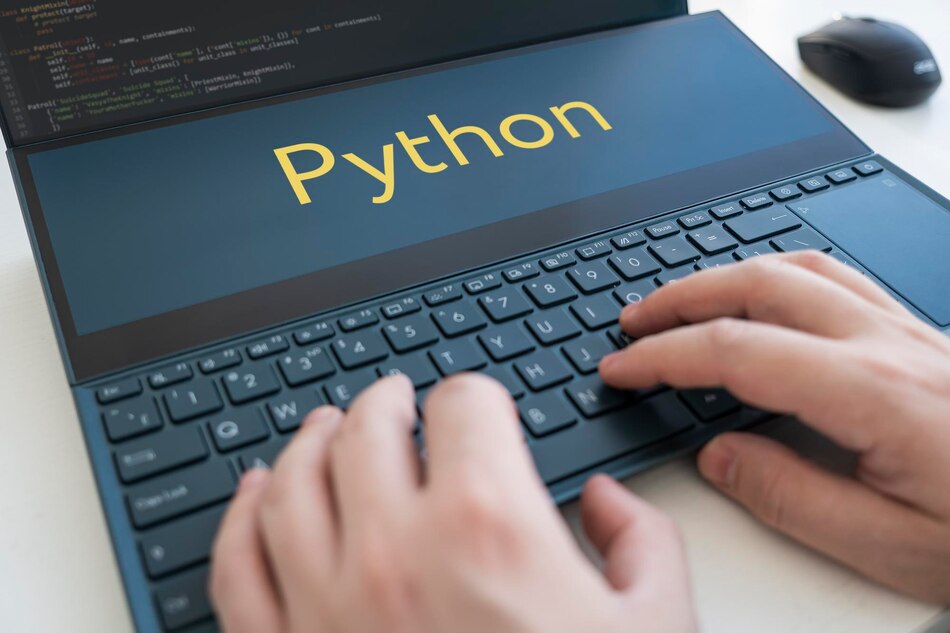Exploring the Advantages of Python for Developing Robust and Efficient Blockchain Applications
Blockchain technology has revolutionized various industries, from finance to supply chain management, by providing secure, transparent, and decentralized solutions. When it comes to developing python based blockchain applications, choosing the right programming language is crucial. Python, known for its simplicity, readability, and versatility, has gained significant popularity among developers. In this blog post, we will delve into the advantages and capabilities of Python in developing robust and efficient blockchain applications. We will explore use cases where Python shines, discuss the development process, and highlight essential considerations to ensure successful Python based blockchain application development.


The Advantages of Python for Blockchain Applications :
Simplicity and readability:
Python’s simple and clean syntax makes it easy to read, write, and understand. Its emphasis on code readability enhances collaboration among developers, making it an ideal choice for blockchain projects where multiple contributors may be involved. The simplicity of Python allows for rapid development and quicker iterations, reducing time-to-market for blockchain applications.
Extensive Libraries and Frameworks:
Python boasts a vast ecosystem of libraries and frameworks that can greatly simplify blockchain development. Libraries like Web3.py provide seamless integration with Ethereum and other blockchain platforms, allowing developers to interact with smart contracts and blockchain networks effortlessly. Additionally, frameworks such as Flask and Django offer pre-built components and tools for web development, making it easier to build blockchain-based applications.
Versatility and Flexibility:
Python supports multiple programming paradigms, including object-oriented, functional, and procedural programming. This flexibility enables developers to implement various blockchain logics and adapt to different project requirements. Python’s versatility extends beyond blockchain development, allowing developers to utilize the language for other purposes as well.
Active Community and Documentation:
Python has a large and active community of developers, which means there is abundant support and resources available. The community regularly contributes to open-source libraries and provides helpful documentation and tutorials. This support network ensures that developers can find solutions to problems and stay updated with the latest trends and best practices in blockchain development.
Rapid Prototyping and Testing:
Python’s simplicity and ease of use facilitate rapid prototyping and testing of blockchain applications. The language’s dynamic nature allows for quick iterations and experimentation. Developers can quickly build proofs-of-concept and minimum viable products (MVPs) to validate ideas and gather feedback before scaling up the application.
Integration Capabilities:
Python seamlessly integrates with other languages and platforms, making it versatile for blockchain development. It can be easily combined with C/C++ libraries for performance-critical components or integrated with web technologies like JavaScript for front-end development in blockchain applications. This integration capability allows developers to leverage the strengths of different technologies and create robust blockchain solutions.


Use Cases of Python in Blockchain Development:
Python finds extensive use in various blockchain applications across industries. Let’s explore a few notable use cases:
Smart Contracts:
Python’s simplicity and readability make it an ideal language for developing smart contracts on blockchain platforms like Ethereum. Its extensive libraries, such as Web3.py, facilitate interactions with the blockchain network, enabling developers to build complex decentralized applications (DApps).
Blockchain Prototyping:
Python’s ease of use and rapid development capabilities make it a preferred choice for prototyping blockchain-based applications. Its rich ecosystem of libraries, including Cryptography and PyCryptodome, enables developers to quickly implement cryptographic algorithms, data encryption, and transaction handling.
Data Analytics and Visualization:
Python’s robust data analytics and visualization libraries, such as Pandas and Matplotlib, empower developers to analyze and visualize blockchain data effectively. This helps in gaining insights, identifying patterns, and making informed decisions based on blockchain data.
Considerations for Python Based Blockchain Application Development :
While Python offers numerous advantages, there are certain considerations to keep in mind when developing blockchain applications:
Performance:
Python, as an interpreted language, may not match the performance of lower-level languages like C++ or Rust. However, with optimization techniques, utilizing libraries like NumPy or Cython, and employing scalable architectures, Python based blockchain applications can still achieve satisfactory performance.
Security:
As blockchain deals with sensitive data and transactions, ensuring robust security is critical. Developers must adhere to best practices, employ secure coding techniques, and leverage libraries like PyCryptodome for secure cryptographic operations.
Scalability:
Python’s Global Interpreter Lock (GIL) can limit multi-threading capabilities and impact scalability. However, Python frameworks like Django and asynchronous programming libraries like Asyncio can mitigate this limitation and enhance scalability.
Ecosystem Maturity:
While Python has a vast ecosystem, the maturity of blockchain-specific libraries and frameworks might vary. Carefully evaluate the community support, documentation, and stability of the chosen blockchain libraries before incorporating them into your project.





